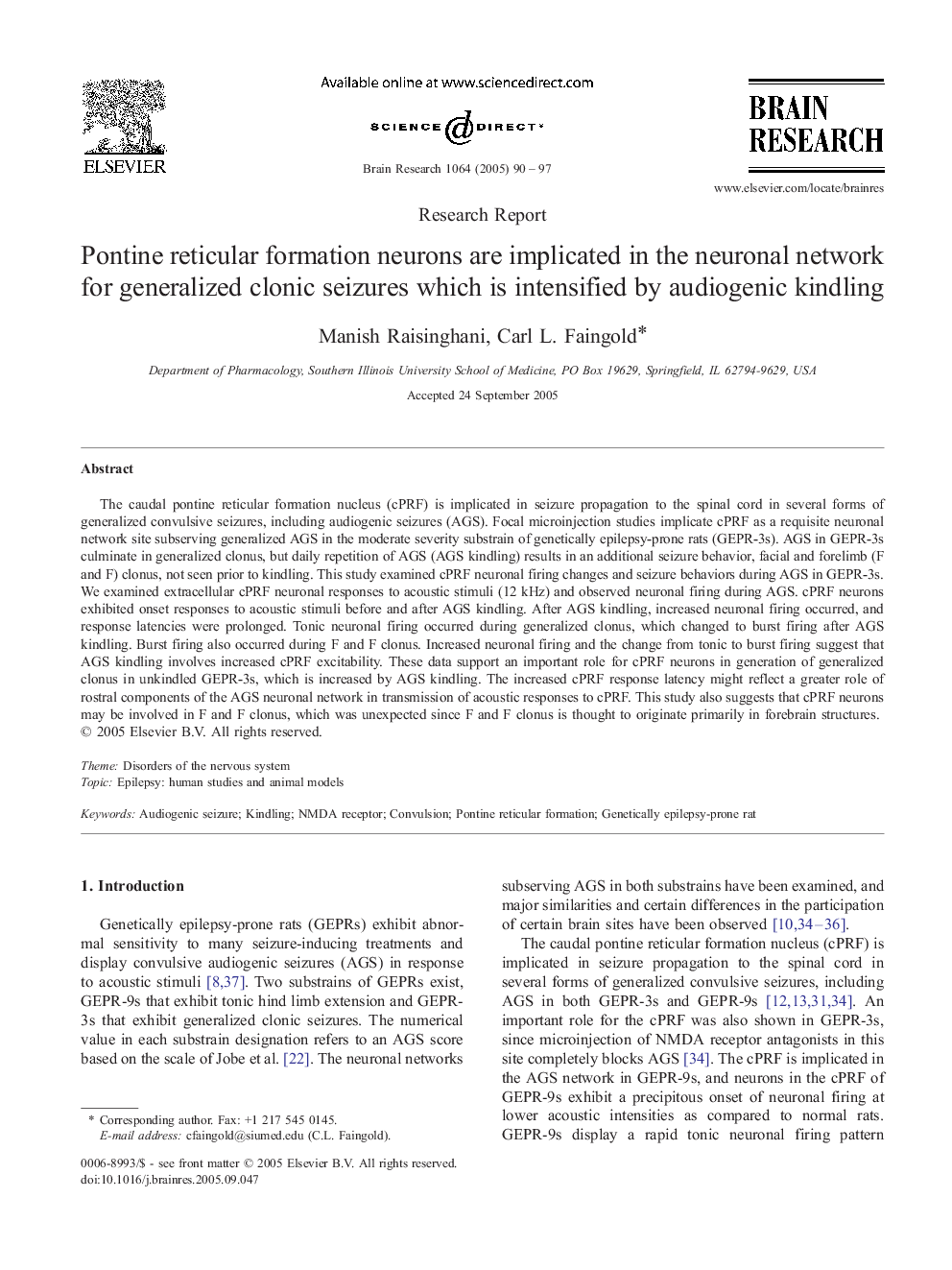| Article ID | Journal | Published Year | Pages | File Type |
|---|---|---|---|---|
| 9415677 | Brain Research | 2005 | 8 Pages |
Abstract
The caudal pontine reticular formation nucleus (cPRF) is implicated in seizure propagation to the spinal cord in several forms of generalized convulsive seizures, including audiogenic seizures (AGS). Focal microinjection studies implicate cPRF as a requisite neuronal network site subserving generalized AGS in the moderate severity substrain of genetically epilepsy-prone rats (GEPR-3s). AGS in GEPR-3s culminate in generalized clonus, but daily repetition of AGS (AGS kindling) results in an additional seizure behavior, facial and forelimb (F and F) clonus, not seen prior to kindling. This study examined cPRF neuronal firing changes and seizure behaviors during AGS in GEPR-3s. We examined extracellular cPRF neuronal responses to acoustic stimuli (12 kHz) and observed neuronal firing during AGS. cPRF neurons exhibited onset responses to acoustic stimuli before and after AGS kindling. After AGS kindling, increased neuronal firing occurred, and response latencies were prolonged. Tonic neuronal firing occurred during generalized clonus, which changed to burst firing after AGS kindling. Burst firing also occurred during F and F clonus. Increased neuronal firing and the change from tonic to burst firing suggest that AGS kindling involves increased cPRF excitability. These data support an important role for cPRF neurons in generation of generalized clonus in unkindled GEPR-3s, which is increased by AGS kindling. The increased cPRF response latency might reflect a greater role of rostral components of the AGS neuronal network in transmission of acoustic responses to cPRF. This study also suggests that cPRF neurons may be involved in F and F clonus, which was unexpected since F and F clonus is thought to originate primarily in forebrain structures.
Keywords
Related Topics
Life Sciences
Neuroscience
Neuroscience (General)
Authors
Manish Raisinghani, Carl L. Faingold,
